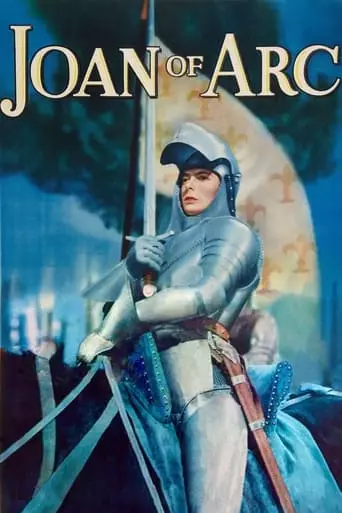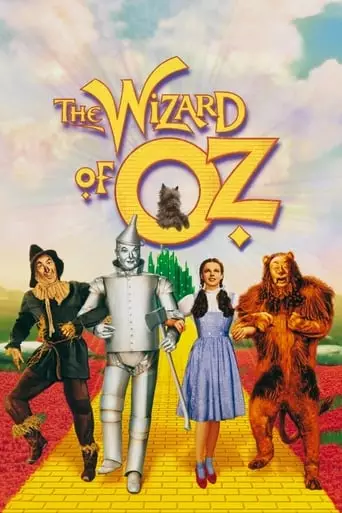In the 15th Century, France is a defeated and ruined nation after the One Hundred Years War against England. The fourteen-year-old farm girl Joan of Arc claims to hear voices […]

In the 15th Century, France is a defeated and ruined nation after the One Hundred Years War against England. The fourteen-year-old farm girl Joan of Arc claims to hear voices […]

Dr. Jekyll believes good and evil exist in everyone and creates a potion that allows his evil side, Mr. Hyde, to come to the fore. He faces horrible consequences when […]

Harvey, the arrogant and spoiled son of an indulgent absentee-father, falls overboard from a transatlantic steamship and is rescued by a fishing vessel on the Grand Banks. Harvey fails to […]

The spoiled daughter of a Georgia plantation owner conducts a tumultuous romance with a cynical profiteer during the American Civil War and Reconstruction Era. Gone with the Wind is a […]

Young Dorothy finds herself in a magical world where she makes friends with a lion, a scarecrow and a tin man as they make their way along the yellow brick […]
Victor Fleming: A Master of Classic Hollywood Cinema
Victor Fleming was an American film director, producer, and cinematographer who became one of the most respected filmmakers of the classic Hollywood era. With a career spanning over three decades, Fleming’s name is synonymous with some of the most iconic and beloved films in cinematic history. From The Wizard of Oz (1939) to Gone with the Wind (1939), Fleming’s work continues to be celebrated for its visual grandeur, emotional depth, and lasting impact on the film industry.
Early Life and Career Beginnings
Victor Lonzo Fleming was born on February 23, 1889, in La Cañada, California. Raised in a family of modest means, Fleming developed an early interest in photography and the arts. After a brief stint as an engineer, he shifted his focus to the burgeoning film industry in Hollywood.
Fleming began his career in the silent film era as a cameraman and assistant director. His early work included collaborations with directors such as Clarence Brown and King Vidor, where he honed his skills in cinematography and storytelling. His early experiences on set gave him the technical expertise and creative sensibility that would later define his directorial style.
Breakthrough and Early Directorial Success
Fleming’s directorial career took off in the early 1930s, with his first major successes coming with films such as Red Dust (1932), starring Clark Gable and Jean Harlow. The film, set in a steamy Southeast Asian plantation, was a commercial hit and showcased Fleming’s ability to balance romance, drama, and tension.
Throughout the 1930s, Fleming directed a variety of films, including romantic dramas, comedies, and adventure films. However, it was his work in 1939—arguably the greatest year in Hollywood history—that would solidify his place in cinematic history.
Gone with the Wind (1939): A Landmark Achievement
Fleming’s most enduring legacy is his direction of Gone with the Wind, the epic adaptation of Margaret Mitchell’s Pulitzer Prize-winning novel. The film, set against the backdrop of the American Civil War, starred Clark Gable as Rhett Butler and Vivien Leigh as Scarlett O’Hara.
Though Fleming was not the original director (George Cukor was initially hired but was replaced), his vision and leadership shaped the final product. Gone with the Wind became a monumental achievement in filmmaking, both in terms of its scale and emotional resonance. The film won 10 Academy Awards, including Best Picture, and remains one of the highest-grossing films of all time when adjusted for inflation.
Fleming’s direction of Gone with the Wind is celebrated for its sweeping cinematography, powerful performances, and masterful handling of the film’s complex themes of love, loss, and survival. The film’s epic scope and historical significance continue to make it a cornerstone of American cinema.
The Wizard of Oz (1939): A Timeless Fantasy Classic
In the same year that he directed Gone with the Wind, Fleming also directed The Wizard of Oz, one of the most beloved and influential films in history. Based on L. Frank Baum’s 1900 novel, the film stars Judy Garland as Dorothy, a young girl who is transported to the magical land of Oz.
While The Wizard of Oz was not initially a box office success, it has since become a cultural phenomenon, thanks in part to its unforgettable performances, colorful set designs, and iconic songs like “Somewhere Over the Rainbow.” Fleming’s direction of the film helped bring Baum’s fantastical world to life, blending whimsical elements with a heartfelt story about self-discovery and friendship.
Fleming’s use of Technicolor, particularly in the transition from Dorothy’s sepia-toned Kansas to the vibrant world of Oz, became one of the film’s most striking visual features. The film’s imaginative world-building and emotional depth have made it a timeless classic, beloved by generations of viewers.
Later Career and Legacy
Following his success in 1939, Fleming continued to direct films in a variety of genres, although none reached the same level of iconic status as Gone with the Wind or The Wizard of Oz. Some of his notable later works include:
Dr. Jekyll and Mr. Hyde (1941): A psychological horror film starring Spencer Tracy, this adaptation of Robert Louis Stevenson’s classic novella showcased Fleming’s ability to tackle darker, more complex material.
A Guy Named Joe (1943): A romantic fantasy film starring Spencer Tracy and Irene Dunne, which was later remade as Always (1989) by Steven Spielberg.
Despite the success of his earlier films, Fleming’s later works were often overshadowed by the monumental achievements of 1939. However, his technical proficiency, skillful direction, and storytelling ability continued to resonate in the industry.
Directorial Style and Themes
Victor Fleming’s films are known for their strong visual storytelling, emotional resonance, and sweeping narratives. Key elements of his directorial style include:
Grand Cinematic Scope: Fleming’s films often featured large-scale productions, particularly in the case of Gone with the Wind and The Wizard of Oz. His ability to create epic, immersive worlds was a hallmark of his work.
Emotional Depth: Whether directing romance, drama, or fantasy, Fleming’s films were always anchored by strong emotional arcs, with complex characters and their struggles at the heart of the narrative.
Innovative Use of Technology: Fleming was known for his use of new technologies, such as Technicolor, which helped create some of the most visually stunning films of his era.
Character-Driven Stories: Even in his larger-than-life epics, Fleming’s focus remained on the characters’ emotional journeys, making their stories relatable and compelling.
Legacy and Influence
Victor Fleming’s contributions to cinema have left an indelible mark on Hollywood. His work on Gone with the Wind and The Wizard of Oz helped shape the golden age of Hollywood and set the standard for epic filmmaking. Both films continue to be studied and revered by filmmakers, critics, and audiences alike.
While he may not be as widely recognized as some of his contemporaries, such as John Ford or Frank Capra, Fleming’s legacy as a director is undeniable. His ability to balance technical innovation with emotional storytelling makes him one of the most significant filmmakers of the 20th century.
Conclusion
Victor Fleming’s career stands as a testament to the power of classic Hollywood cinema. With his direction of Gone with the Wind and The Wizard of Oz, he created two of the most iconic films in history, films that continue to inspire and captivate audiences to this day. His legacy as a master of epic storytelling, visual grandeur, and emotional depth ensures his place as one of the great directors in the history of cinema.